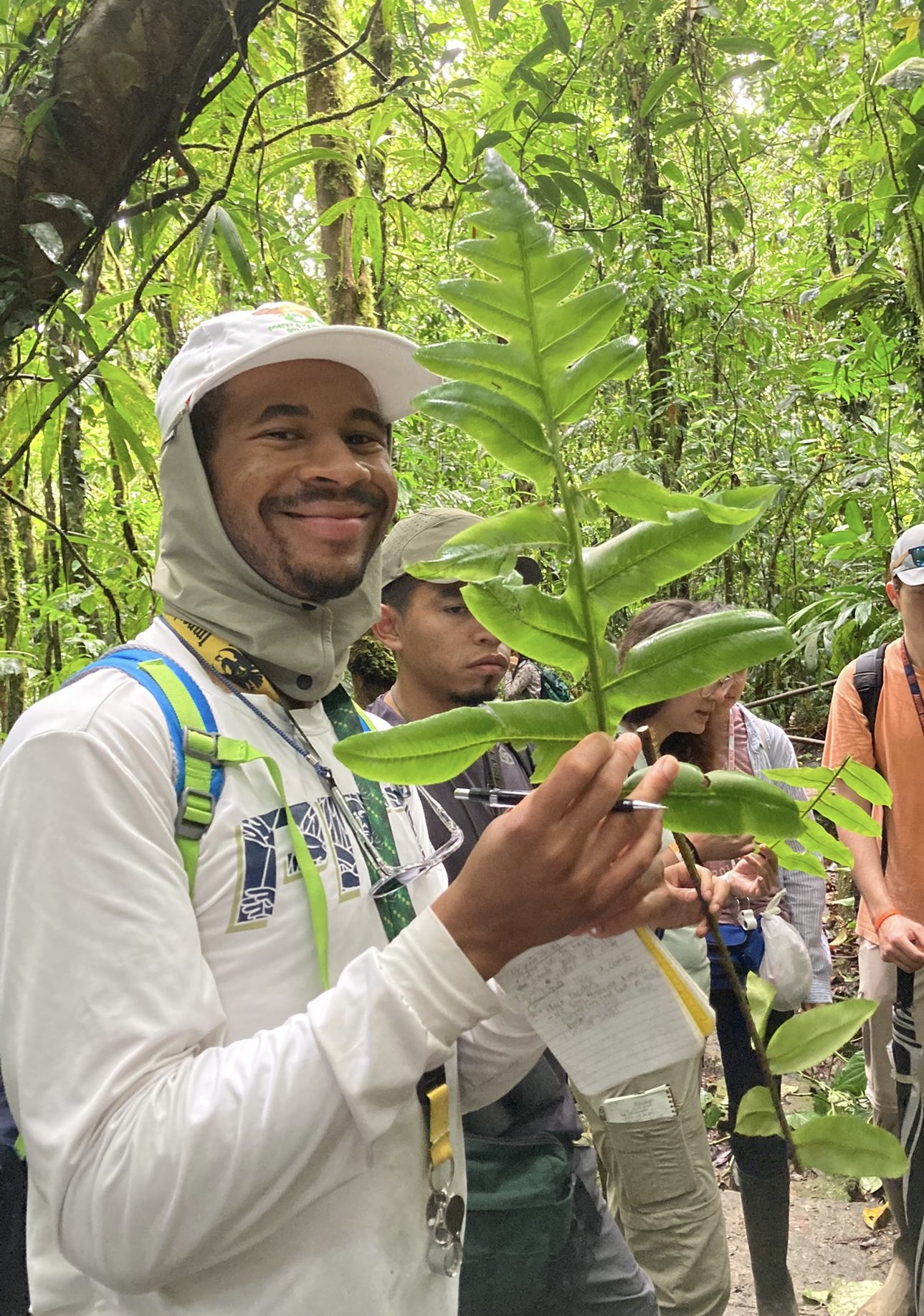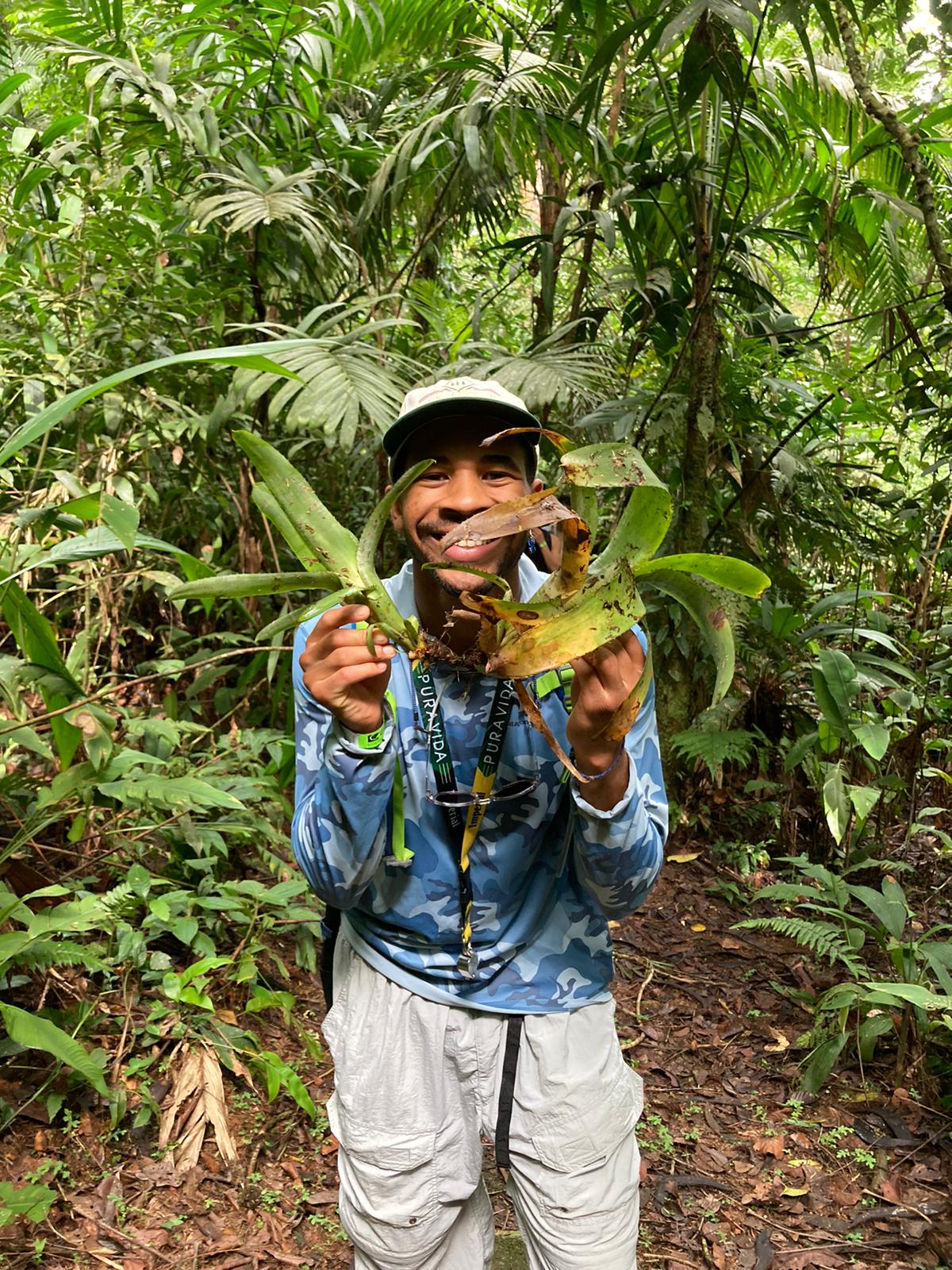|
Josh Felton
Post-Baccalaureate
Colorado College
Organismal Biology and Ecology
Posted 11-21-22
Twitter: @Joshfelton12
Instagram: @botany.baller
 |
My undergraduate honors thesis was a comparative study on the reproductive biology of two species of Bromeliaceae (the pineapple family). I began the study during the first years of the COVID-19 pandemic, which was a major help in maintaining my sanity and protecting my mental health at the beginning of these stressful times. The focal species, Vriesea rafaelii and Billbergia brasiliensis are both epiphytes capable of selfing and outcrossing, each producing a showy inflorescence seemingly adapted for different pollinators and seed dispersers. We wanted to investigate how the different pollination syndromes and fruit types influenced reproductive effort (the proportion of biomass invested by a plant towards structures for sexual reproduction compared to vegetative structures) and if outcrossed flowers invested more biomass into the maturing fruit and yielded higher seed mass than selfed flowers. We hypothesized that individuals would invest more energy into flowers that were cross-pollinated, thus maintaining genetic variation, and reducing the effects of inbreeding depression.
I spent 31 weeks in our greenhouse meticulously documenting variation and performing flower crosses. We found that both species were indeed self-compatible, but with differences in reproductive allocation to fruits. Billbergia brasiliensis outcrossed fruits were heavier while Vriesea rafaelii outcrossed and selfed fruits were not different statistically. Vriesea rafaelii individuals allocated more biomass towards the inflorescence structure (scape and bracts) compared to vegetative mass than Billbergia brasiliensis. This may be due to the difference in scape form (V. rafaelii was erect while B. brasiliensis was pendant) but closer exploration into the morphology is needed.
Both species are endemic to the Brazilian Atlantic Forest, a global hotspot of biodiversity (particularly for bromeliads) that has been severely diminished and fragmented. I recently submitted a manuscript of my results to a journal to be accessible to conservationists. During the same session at BOTANY where I presented these results, I heard a talk on breeding system distributions in angiosperms and am now eager to learn more about the evolution of breeding systems. Next year I plan to begin a doctoral program where I hope my research will be based on breeding systems in Bromeliaceae.
 |
How Josh got interested in the botanical sciences:
An environmental science class in high school had a profound effect on me wanting to study the natural sciences. The class was the first time my senses were supercharged about science which occurred while I was in the field assessing stream quality and identifying macroinvertebrates. The sound of the bubbling creek and lush greenery around me sent me into a state of flow that I would later experience again when I took my first field botany course. The joy I had learning in the class led me to think that I was going to major in environmental science during my undergraduate studies.
My journey as an EV major ended abruptly during the second semester of my first year when I took an introductory botany class. I was engrossed in the breadth of botanical nomenclature to describe different morphological structures. This was the defining moment where I knew I wanted to dive as deep as I could into any facet of botany I could learn about. Class after class, I took various plant science courses, eventually finding my first love of botany with plant-pollinator interactions. This occurred in an ecology class taught by Dr. Roxaneh Khorsand, who has focused her work on these interactions in the Arctic. The ecology of the highly variable interactions was mind-boggling to me, and I was drawn to learning more about the mechanisms various plants use to garner the specific services they required and how/if they provided goods to pollinators. In 2020, I began to work with my former undergraduate advisor, now colleague, Dr. Rachel Jabaily. By this time, I was antsy to start conducting research outside of class projects. While working with her on my undergraduate honors thesis, I began to see the feasibility of making a career out of botany.
Josh's advice for those just starting their botanical journey:
While my journey has similarly just begun, looking back at the past couple of years, I would say I would not feel as connected to the botanical community if I was not following so many cool botanists on Twitter. It has been a great space to see what botanists are up to in their personal and work lives. Botanical Twitter has also allowed me to get a sneak peek into what graduate students and postdocs are up to that I would not otherwise get to see coming from a liberal arts institution. I also recommend not being afraid to reach out to anybody whose research is interesting to you. It is often the case that whoever you are reaching out to will be joyous to geek out about plants.
Other Passions:
I am obsessed with finding new music. It is rare to find me without my headphones in my ear as I am constantly creating new playlists (I have over 1,000 playlists on Spotify…). Some of my favorite artists at the moment are Faye Webster, Big Thief, Mac Demarco, Alvvays, and Isaiah Rashad. Outside of my music endeavors, I love to go thrift shopping, especially at Goodwill Outlets, though the per-pound pricing is dangerous for the closet space I have.
Click here to return to BSA Spotlight Series homepage.
|